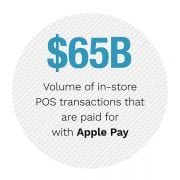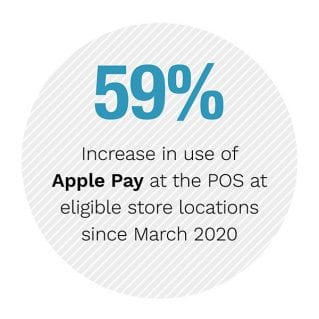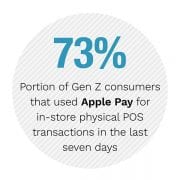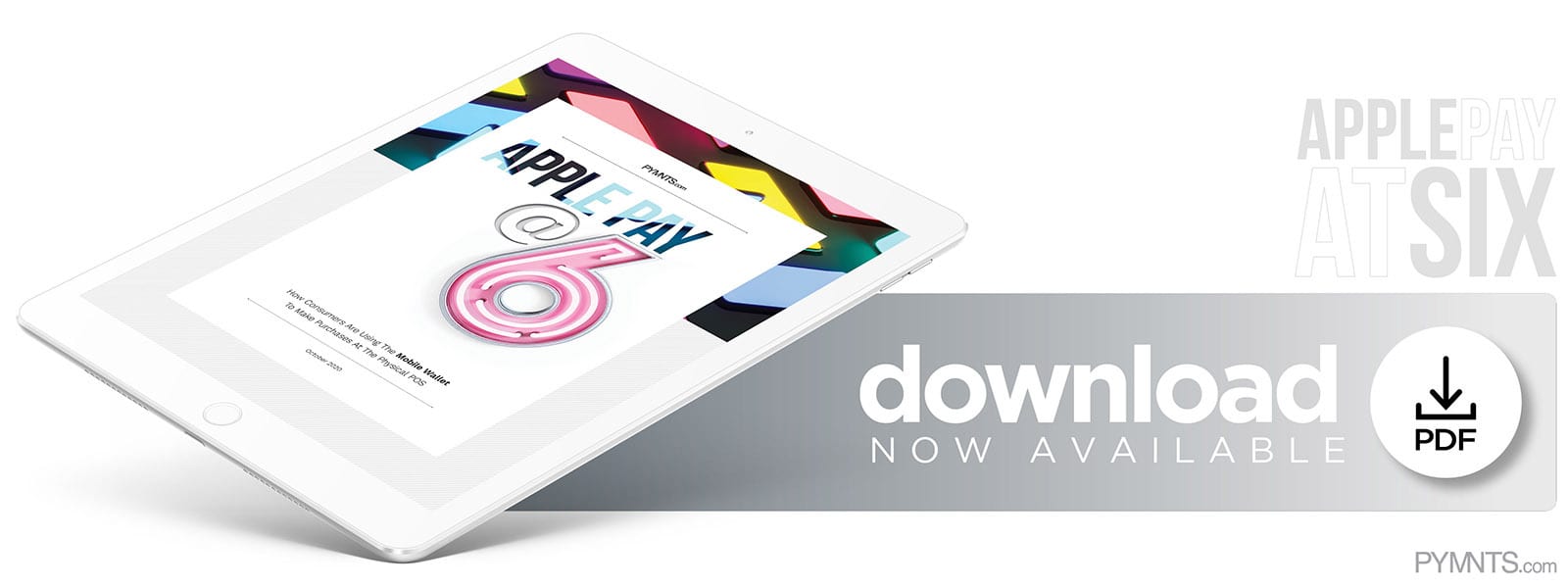Apple Pay At Six: How Consumers Are Using It At The Physical Point Of Sale

The launch of the Apple Pay mobile wallet has long been seen as Apple’s attempt at replacing consumers’ use of plastic cards for in-store purchases as their primary payment method.
Today, Oct. 20, happens to be Apple Pay’s six-year anniversary.
So, where does Apple Pay stand today? To what extent has it succeeded in changing consumers’ use of plastic cards at the point of sale (POS) in physical stores?
PYMNTS has been tracking consumers’ use and adoption of the mobile wallet ever since its launch in 2014. Our latest research shows that the use of Apple Pay for POS transactions at eligible stores has risen by 59 percent. Nearly 8 percent of consumers that have Apple Pay enabled on their phones are now using it to make payments at the physical POS at stores that accept the wallet. This is com pared to the 4.9 percent of U.S. adults who reported doing the same prior to the pandemic in March 2020.
pared to the 4.9 percent of U.S. adults who reported doing the same prior to the pandemic in March 2020.
These are just a few of the findings from the latest Apple Pay At Six: How Consumers Are Using The Mobile Wallet To Make Purchases At The Physical POS, a special PYMNTS report, which specifically focuses on how the use of Apple Pay for in-store POS transactions has changed since it was first launched in 2014 and why — as well as what role the ongoing COVID-19 pandemic appears to be playing in these shifts.
Part of the reason that has seemingly influenced Apple Pay’s singular growth during the ongoing health crisis is its ubiquity among users of Apple smartphones.  The mobile wallet’s availability has risen steadily following its launch over half a decade ago, with the contactless payment method now available on 93.9 percent of all iPhones the company offers, up from 39.2 percent in 2015. Nearly 91 million Americans can make use of the Apple Pay wallet to transact at eligible stores.
The mobile wallet’s availability has risen steadily following its launch over half a decade ago, with the contactless payment method now available on 93.9 percent of all iPhones the company offers, up from 39.2 percent in 2015. Nearly 91 million Americans can make use of the Apple Pay wallet to transact at eligible stores.
Yet availability is only one part of the puzzle — as only 2.7 percent of consumers actually use the mobile wallet to shop at Apple Pay-eligible stores. The ongoing COVID-19 pandemic has impacted consumers’ priorities and their demand for touchfree shopping—especially when shopping in physical stores and these new priorities seem to be making room for Apple Pay at the physical POS.
To learn more about how precisely the use of Apple Pay has changed in the six years since its launch and what impact the ongoing pandemic is having, download the report.
